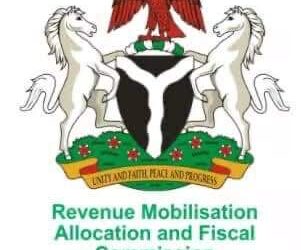Since the 2020 budget was signed into law by President Muhammadu Buhari, the issue of Nigeria’s borrowing has refused to go away, especially with the figures presented by the Ministry of Finance, Budget and National Planning; BENJAMIN UMUTEME takes a look..
The Budget Office of the Federation has released Nigeria’s approved budget for 2020. According to Premium Times, the appropriation bill, which aims at sustaining growth and job creation, was expeditiously passed thereby restoring the federal budget to a January – December budget cycle. It is the earliest approved budget since Nigeria’s return to civilian rule in 1999.
A cursory glance at the budget figures indicates that Nigeria anticipates generating revenue of ₦8.42tn while targeting to spend ₦10.594tn in expenditure.
It hopes to generate 47.2 per cent of its revenue from other revenue sources, 31.4 per cent from oil revenue, and 21.5 per cent from non-oil revenue. 42.4 per cent of the budget will be expended on recurrent expenditure. 23.4 per cent will go into capital expenditure, while over 23 per cent of the budget will be used to service the nation’s debts. A budget deficit of ₦2.175 trillion is anticipated in the 2020 budget.
To fund the deficit, the federal government plans to raise ₦252 billion from privatisation proceeds, ₦744.99 billion from new domestic borrowing, ₦850 billion from new foreign borrowing, and ₦328 billion from draw-down on multilateral/bilateral loan agreements. Technically, only 11.57% from privatisation proceeds will be sourced without incurring additional debts on the country with a considerable debt profile. As at the end of the first half of 2019, pulse.ng reported that Nigeria’s debt profile stood at $83.88bn. This figure is exclusive of The Cable’s reported $30bn loan request being considered by the federal government.
Increasing debt profile
With a glance, a couple of things can be observed from the budget. Perhaps, the first is the country’s increasing debt profile. One question to ask is that with over 23% of the budget expenditure going into debt servicing, can Nigeria afford to borrow more?
This is also against the background that budgetary allocation to debt servicing is almost about 30% of the total anticipated revenue. Closely related to Nigeria’s increasing debt profile and the implications of additional debts is the breakdown of capital and recurrent expenditures.
About 42.41 per cent of the total budget spending will be on recurrent expenditure. With Nigeria’s huge development setbacks and the supposed aspirations for development, the ratio of capital to recurrent expenditure appears a bit discomforting.
This bears some semblance with PM News Nigeria’s report in 2019 that Nigeria’s budgets may not make much impact if it continues to allocate huge percentages to recurrent revenues and unmonitored statutory transfers.
With a significant 31.35 per cent of the revenue being anticipated from the oil sector, the risk of a crash in the global oil prices is another question raised from the appropriation bill.
While Nigeria has had some consistency in oil revenue in the last couple of years, the possible crises in the Middle East may result in fluctuating oil prices. For instance, while S&P Global suggests that the US war with Iran is unlikely, it agrees that such may devastate oil markets. Should such crises generate negative effects on Nigeria’s oil market, then the country will experience considerable revenue challenges within the budget year.
Conversely, there is a possibility that Nigeria may be tremendously enriched even with the crises. The appropriation bill also reveals that Nigeria will be funding some of its budget deficit with privatization proceeds. While the Citizen’s Guide to FGN’s 2020 Budget does not provide in-depth details of this, it is easy to ask if Nigeria is anticipating new privatizations, which enterprises will be privatised, and the modality for any intended privatization.
This is particularly important because of the shortcomings of some past privatisations in the country. For example, in 2018, Premium Times reported the claim of the director-general, Bureau of Public Enterprises, that about 37 per cent of the enterprises that have been privatised or commercialised is not doing extremely well.
Borrowing justified?
The debt management office justified the borrowings in its 2017 report on Nigeria’s national debt.
“While Nigeria’s total public debt stock is relatively low vis-à-vis the country’s GDP, the increased funding requirements needed to sustain the economic recovery, address the huge infrastructural deficit, as well as meet budget financing requirements, would entail enormous funding resources, including borrowing,” it stated.
Professor Olufemi Saibu of the economics department, University of Lagos, said the debt might be worrying, but would be justified if it were used for development projects and not just for regular spending on, for example, salaries and overheads.
“The debt profile is high but it’s not in the red lines yet,” Saibu said. “The problem is that the debt cannot continue to increase; there must be a check on it. And the question is, what are they using the debt for? The quality of projects, productivity and impact of the projects are what matters.”
Debt ratio still low
The IMF Senior Resident Representative and Mission Chief for Nigeria, Mr. Amine Mati, has said that Nigeria’s debt to gross domestic product ratio at 28 per cent has increased but is still below the average sub-Saharan Africa and Africa as a whole.
He stated this at the public presentation of the ‘Fall 2019 issue of the regional economic outlook for sub-Saharan Africa,’ in Lagos, last year.
While mentioning that the revenue to GDP was low, he urged the federal government to increase its drive to create more jobs and revamp its fiscal consolidation.
He said, “Nigeria’s debt has increased but the level is way below the average for the region. Even if we include the CBN overdraft and others, we are talking about a debt to GDP ratio that does not go beyond 27 to 28 per cent to GDP and that is including AMCON overdrafts and others.”
On fiscal consolidation, he said, “For resource intensive countries and the non-resource intensive countries, one thing that is common is that when there is trade shock, they have to react. So, you lose revenues, debt goes up.”
Revenue generation priority
As Nigeria moves into a new budget year, it should pay close attention to its revenue generation as well as its spending.
There are different views on how borrowing can aid developmental aspirations; Nigeria should become intentional about reducing the cost of governance.
The country also needs to develop robust strategies to improve revenue generation while blocking leakages in the generation and utilisation of funds. It should also make accelerated interventions on economic diversification and create regimes that will aid trade, investment, and growth.



